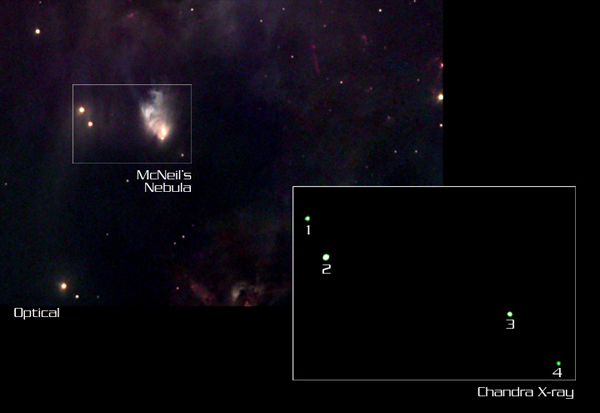

|

|
|
||||
|
McNeil's Nebula: A cloud of dust and gas illuminated by a rapidly accreting young star 1300 light years from Earth in the constellation Orion. Caption: McNeil's Nebula was discovered with a 3-inch telescope by amateur astronomer Jay McNeil in January 2004. A comparison between the X-ray and optical views is shown. A young star (source 3) at the apex of the nebula was observed to brighten dramatically in X-ray, optical and infrared wavelengths, illuminating the nebula. The X-ray data are strong evidence that the probable cause of the outburst is the sudden infall of gas onto the surface of the star from an orbiting disk of gas. Accumulation of more gas in the disk could lead to a new outburst in the future. This scenario could explain why the brightness of McNeil's Nebula appears to vary with time. It appears in optical images taken of this region of Orion in the 1960s, but is absent from images taken in the 1950s and 1990s. Scale: Inset is 8.6 by 5.9 arcmin Full Field Optical image is 11.7 by 7.8 arcmin Chandra X-ray Observatory ACIS Image
CXC operated for
NASA by the Smithsonian Astrophysical
Observatory
|
|
|